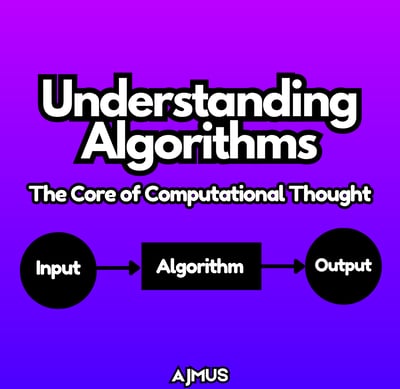Understanding Algorithms: The Core of Computational Thought


In the vast and ever-evolving world of computer science, algorithms hold a foundational place. They are the unseen engines that power computations, optimize processes, and solve problems across domains. But what exactly is an algorithm? Let’s break it down, explore its history, and understand its significance in both ancient and modern contexts.
What is an Algorithm?
An algorithm is essentially a recipe—a step-by-step computational procedure designed to solve a problem or perform a task. Imagine a box: you feed inputs into one side, the algorithm processes them systematically, and outputs emerge on the other. Simple examples include algorithms to add or multiply two numbers. These are fundamental yet illustrate the essence of algorithms: structured and deterministic problem-solving processes.
For instance, consider multiplying two numbers, say . The familiar grade-school multiplication method we learned is itself an algorithm—a mechanical sequence of steps that produces a predictable result. What makes algorithms special is their universality: they work regardless of the specific inputs, provided those inputs align with the problem’s parameters.
A Brief History of Algorithms
The concept of algorithms is far from modern. Ancient civilizations across the globe developed algorithms for a variety of practical purposes:
Chinese Mathematicians: Used tools like the abacus for arithmetic operations.
Indian Mathematicians: Invented the place-value number system and accompanying arithmetic algorithms.
Greek Contributions: Developed methods like the Euclidean algorithm for finding the greatest common divisor (GCD) and the Sieve of Eratosthenes for identifying prime numbers.
These early algorithms were primarily numerical, driven by the need to solve real-world problems—calculating areas of land, predicting celestial events, or optimizing trade routes.
The term “algorithm” itself traces its roots to the 9th-century Persian mathematician Al-Khwarizmi. His works on arithmetic and equations were translated into Latin, and his name evolved into the term we use today. Despite its ancient origins, the study of algorithms as a formal discipline gained prominence only with the advent of modern computing.
The Evolution of Algorithms
The invention of computers revolutionized the study and application of algorithms. No longer limited to manual computations, algorithms could now leverage the speed and precision of machines. This transition marked the birth of algorithmic design as a cornerstone of computer science.
Two pivotal figures in this transformation are:
Alan Turing: Turing introduced a formal model of computation known as the Turing Machine, which remains foundational in understanding what can be computed.
Donald Knuth: Often called the father of modern algorithms, Knuth authored “The Art of Computer Programming,” an extensive compendium of algorithms and their applications.
These advancements underscored the critical role of algorithms in computational efficiency and problem-solving.
Modern Applications of Algorithms
Today, algorithms permeate every facet of our lives. From mundane tasks to complex logistical challenges, they operate behind the scenes, driving efficiency and innovation.
Search Engines: When you type a query into Google, algorithms rapidly sift through vast datasets to deliver the most relevant results. These processes involve indexing, ranking, and mapping geographical data to personalize your search.
Navigation: Apps like Google Maps or Waze rely on algorithms to calculate the shortest or fastest route from one point to another, considering traffic conditions in real-time.
Air Travel: Algorithms manage the logistics of airports—assigning gates to planes, scheduling runway usage, and optimizing flight paths for fuel efficiency.
Delivery Services: Companies like FedEx use the Traveling Salesperson Problem (TSP) algorithm to optimize delivery routes, reducing costs and improving efficiency.
Healthcare: Algorithms match medical students to residencies, kidney donors to recipients, and optimize hospital operations. The Stable Marriage Algorithm, for instance, plays a key role in ensuring optimal matches in residency programs.
The Essence of Algorithms in Everyday Life
Algorithms are not confined to the digital realm. Their influence extends to various physical systems, enabling society to function smoothly. For example:
Scheduling problems (e.g., assigning planes to gates or allocating resources in factories).
Assignment problems (e.g., matching employees to tasks or optimizing production).
Resource allocation (e.g., in economic systems or public utilities).
These systems showcase the adaptability and indispensability of algorithms across domains.
The Future of Algorithms
With advancements in artificial intelligence, machine learning, and quantum computing, algorithms continue to evolve. They are becoming more sophisticated, enabling applications we could scarcely imagine a few decades ago. From personalized medicine to autonomous vehicles, algorithms are the driving force behind innovation.
Conclusion
Understanding algorithms is crucial for anyone exploring computational sciences or aiming to appreciate the hidden mechanics of modern life. They are more than abstract constructs; they are tools that shape how we interact with the world. As the demand for efficiency and automation grows, so too does the importance of algorithms. Whether you’re a student, a professional, or simply curious, delving into this fascinating field opens doors to endless possibilities.
FOLLOW ME ON SOCIAL MEDIA RIGHT NOW:
